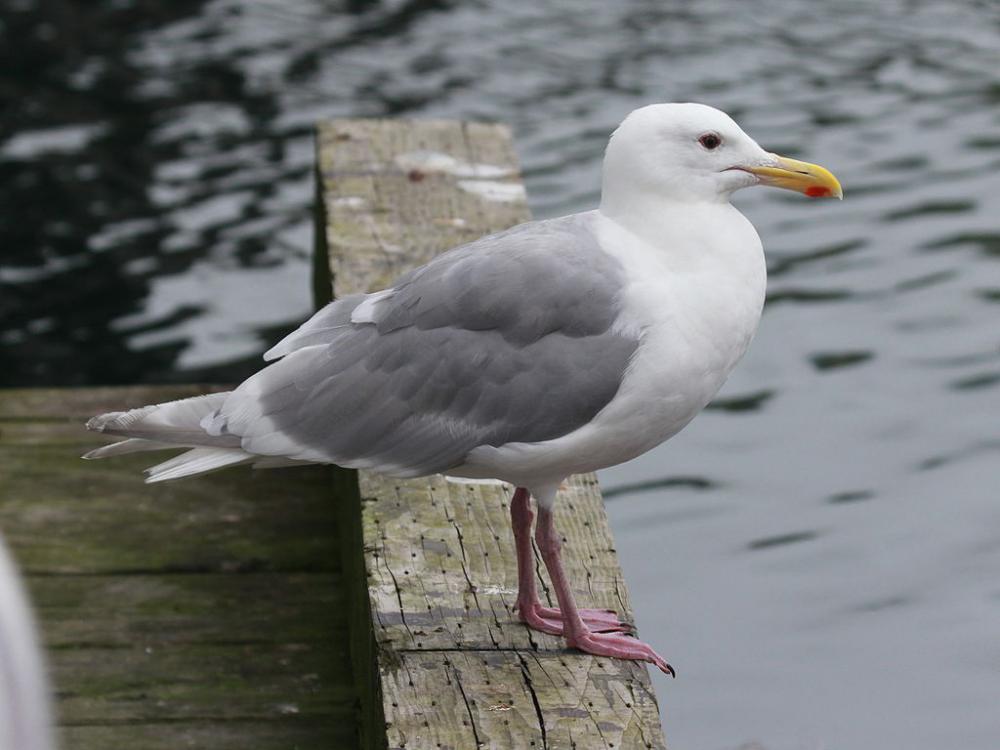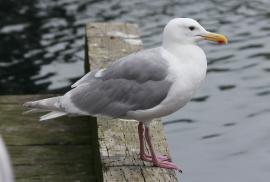Guide to Boreal Birds
Overview
Very rare away from salt water. Like other large gulls, this species feeds mainly along the shore. Over water it picks up edibles such as dead or dying fish and squid; on the beach it feeds on dead seabirds, seals, whales, starfish, clams, and mussels. In harbors and towns it scavenges garbage. One banded female was observed to make daily trips from her nest to a garbage dump about 40 miles (65 kilometers) away.
Description
24-27" (61-69 cm). A large white gull with pearly gray mantle and wings. Gray primaries show a white "window" near tip of each feather; bill yellow with red spot on lower mandible; eyes light brown or silvery; feet pink. In winter, red spot on bill becomes a diffuse black; head and nape look dusky. Juvenile similar to Western Gull juvenile, but much paler. First-year birds gray-brown overall, with wing tips same color as mantle. Black bill; dark eyes and feet. Second-year birds acquire more gray and are generally paler.
Voice
A raucous series of similar notes on one pitch; also soft ga-ga notes when an intruder approaches.
Nesting
2 or 3 light olive-brown eggs, with dark speckles, in a grass or seaweed nest placed in a depression on remote islets or headlands. Nests in colonies.
Habitat
Rocky or sandy beaches, harbors, dumps; open ocean.
Range/Migration
Resident from Aleutians and western and southern coasts of Alaska south to northwestern Washington. Winters south along coast to southern California.



